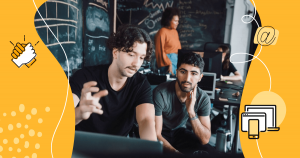We’re almost reaching the halfway point of 2023, and one of the most present topics in marketing and technology discussions certainly is the rise of the AI tools that became available less than a year ago.
Things have been happening so fast that it is hard to even pick some adjectives to define this moment, but I’m quite certain that “exciting” and “scary” would be among them.
As a Designer and Illustrator, to be up to date with recent improvements in the area is part of the job, so I tried Midjourney a couple of months ago.
I’ve never used it (or any other generative image software as DALL-E 2, etc) in my process until now, especially after the artistic community addressed copyright issues with the database of these tools and the unethical use that it allows, bringing to light images that not only are copies of some human artist style, but actually used pieces of images from those human artists to base the generation of the AI image.
At the end of March, Adobe took a big step and entered the game by launching their own AI model: Adobe Firefly. Basically, Firefly is a generative AI model focused on images and texts that will work complementing the existing softwares (and potentially the new ones) inside the Creative Cloud.
There is a stand alone version with an easy interface so people can explore some of the possibilities. And here you can find a live show where Eric Snowden, VP of Design at Adobe, presents some of the concepts behind Firefly and shows some demonstrations of what tools are already among us and what’s coming next.
According to Snowden, one of the main goals of Firefly is that it works directly enhancing image creation and manipulation inside Adobe softwares like Photoshop and Illustrator.
In other words, Firefly will represent the means to an end and optimize production workflow realizing tasks that today take a long time for a creative designer to accomplish. Taking another step in this direction, last week on May 23th, Adobe made the “Generative Fill” available inside a beta update of Photoshop.
Next I’ll be sharing some interesting findings, the ups and downs and main takeaways of this “first date” with Firefly.
Content Authenticity
This was, perhaps, the main topic that caught my attention about Adobe’s approach to AI tools. The company seems to be very concerned about the ethical generation of AI images and one such proof of this is the use of licensed Adobe Stock images and copyrighted expired images to train the model. Snowden points out that:
“I think what our model is trained on, which is Adobe Stock licensed image and things that were copyrighted expired… they grew being… trying to be really transparent about what’s in it and we’re really going for a commercially safe model, so people can use it, after the beta period is over, people can use it in commercial work. I think that’s really important for us.“
This positioning brings a counter weight to the polemic about AI that are trained using databases with proprietary images without the knowledge or express consent of their authors, which is the case of tools like Midjourney and DALLE-2. Snowden goes on to talk about transparency:
“We’ve had this initiative called Content Authenticity for I think 3 or 4 years now and it’s really about content provenance, like who made what, how was it made and I always joke that it’s like nutritional information for content, right? It’s like ‘You deserve to know what goes into the content you’re consuming and you can decide…’. You can make informed choices based on that. It’s not a judgment, but it’s just like transparency and so all of the images that are created with Firefly are tagged with content authenticity so it’s known that they were created by AI and I think as this world advances, like, having this view into how stuff was created becomes super important and I think that’s also a differentiator for us. We’re trying to really be as transparent as possible when AI is used, because I think that’s going to be important information for us to all know in the future.“
Another important topic that content authenticity can help with is the identification of fake images, so long as any visuals created with Firefly will be tagged as an asset generated by artificial intelligence.
This is an important approach because AI tools are evolving at a fast pace, and in some cases it’s already difficult to tell if a photo is true or if there was some manipulation. So it becomes essential to make clear if AI was involved, or not, and avoid fake news or other unethical uses of these tools.


The Generative Fill tool itself
First of all, I just wanted to point out that AI on Photoshop is not something new. We’ve seen it in tools like “Content Aware” and “Puppet Warp”. Of course, with the Generative fill, the highs reach another level. So, let’s see a little bit about the tool itself.
After watching some demos of the tool it was time for me to test it. So, I downloaded Photoshop Beta on the Creative Cloud app and there I started to make some experiments on some pictures I took during some trips. To use it, you have to open an image and make a selection (you can use the lasso, magic wand, pen tool, whatever works for you). Then a contextual menu will appear with the option “Generative Fill” on it.
I brought a picture I was working on in 4 frames. The first one is the original picture the way it was shot with the camera. In the second I asked the Generative Fill to remove the people and the car from it (and enhanced some features with Lightroom).
In the third image, I asked the tool to create a water puddle with reflection on the ground. And in the forth image, I pushed the boundaries and asked the AI to put a flying horse in the image. As you can see below, in some cases things worked just fine, but in others it just came out weird, like the horse with a winged guy on its back and the floating riverdancing female figure that came out of nowhere.
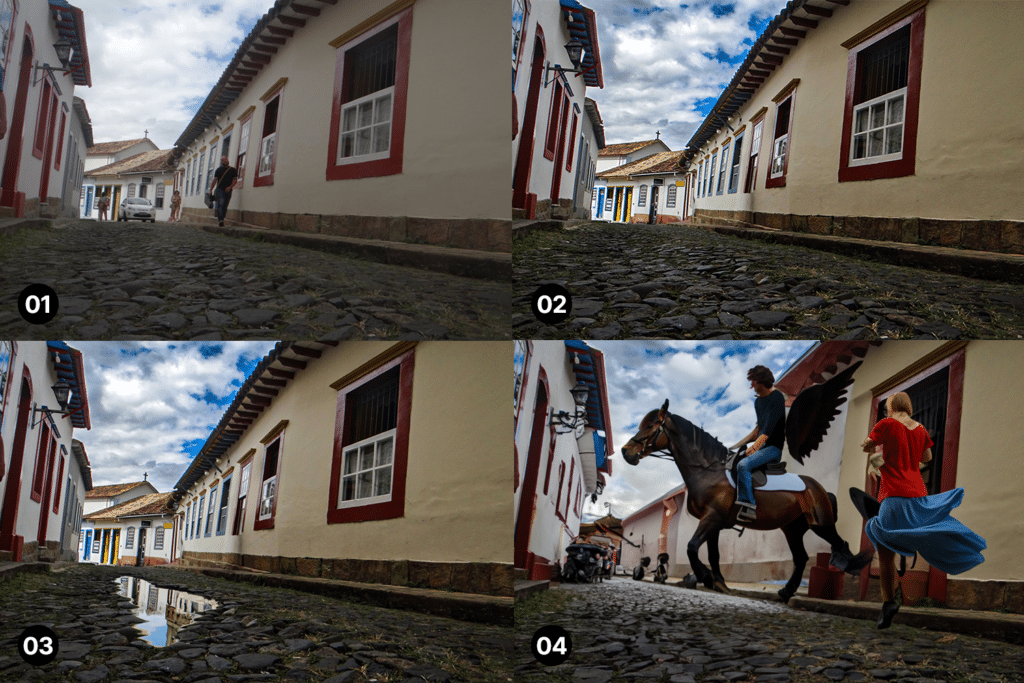
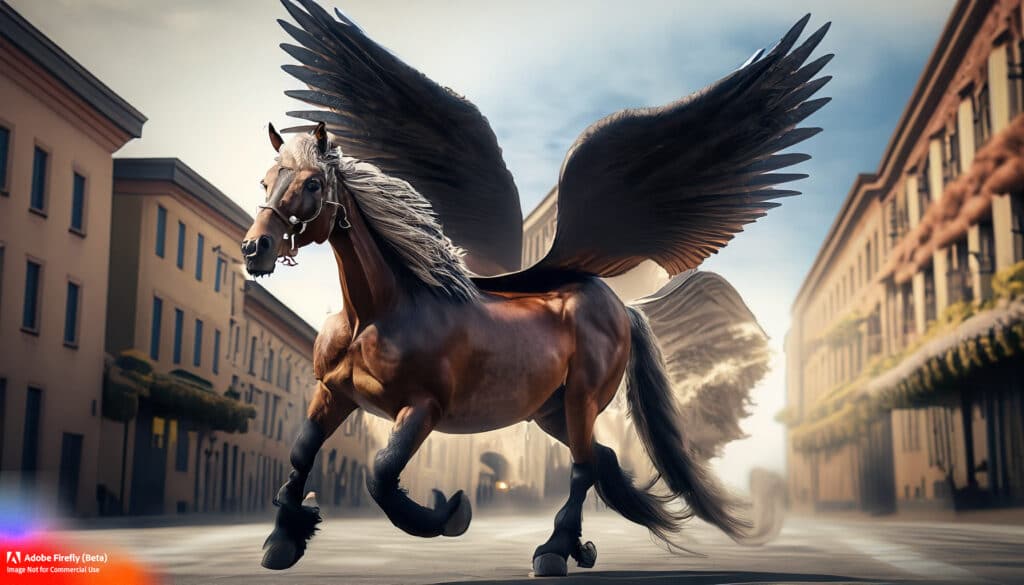
Another possibility brought by Generative Fill is extending an image with parts that didn’t exist before. This one is really interesting especially when you have a really good photo, but wish it had a better framing or needed it to be wider, for example.
Below we can see this resource in action: 01 is the original image taken with the cellphone camera and 02 is the landscape image generated with the help of Generative Fill. 03 shows exactly where the points of expansion are.
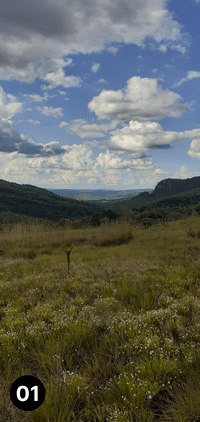
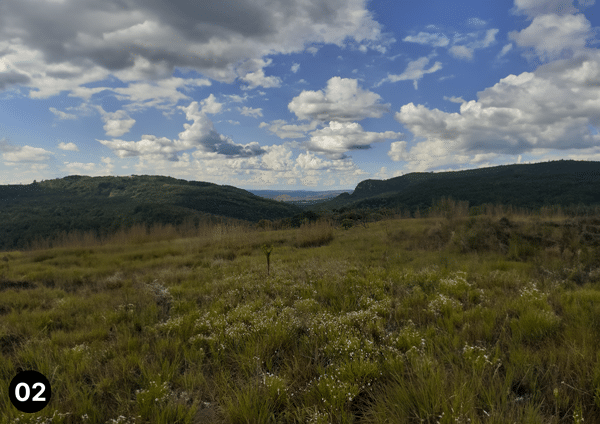

Let’s do one more test so we don’t drag this article out too much. I took an illustration with the unique style we use here at Rock Content. So, I’ve put the illustration on a blank canvas and asked the AI to create a woman doing a presentation with graphics to an audience. And it gave me the following variations:
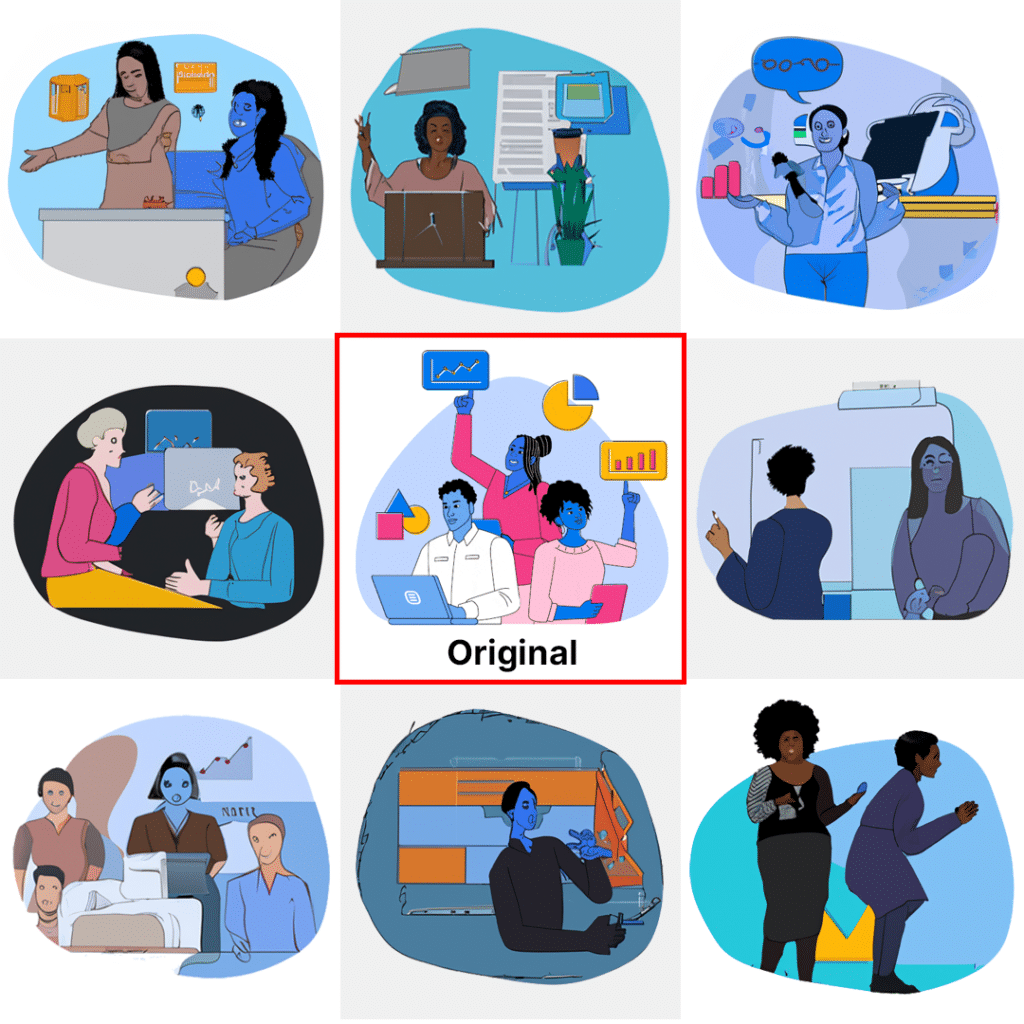
The tool still has a bad time replicating an illustration style with good results. Some of the variations may serve as a reference starting point, but it’s not yet the time to generate the best results with just one click. But, the future of Firefly promises interesting things, like combining images, taking a 3D modeling asset and creating any texture you want on it ,and generating vector images from prompts.
What I realized with these tests is that, at the current point, Generative Fill made photo editing and manipulation much easier and faster. Removing a background, inserting, removing or replacing elements in a picture with good results were tasks that used to take a long time, sometimes hours.
They can now be completed in a few seconds if you know how to ask, and don’t demand too much from the tool. A worthy reminder is that this tool and all other AI solutions are in constant improvement. So, the bad results of today will have been only “growing pains” tomorrow (maybe literally tomorrow).
A hypothesis for the bad results is that a learning database based only on Adobe Stock and expired copyrights image is way smaller than a general one. But if that’s the case. I would still prefer doing things the right way and respect copyrighted images.
Anyway, at this moment the evaluation of the creative community will help to improve Generative Fill. It’s possible to give positive or negative feedback to each generated image inside Photoshop Beta.
Meanwhile, I’ll begin to use some of the resources that can really save a lot of time and give my human touch to maintain quality standards. It was an average “first date”. With some mismatches, but some good surprises also.
Of course I’ll have to “go out” with those AI tools more times to see where this “relationship” can go. For now it’s safe to say that Adobe brought some game-changing possibilities to the table. Let’s experiment and watch closely to see what comes next.
Do you want to continue to be updated with Marketing best practices? I strongly suggest that you subscribe to The Beat, Rock Content’s interactive newsletter. We cover all the trends that matter in the Digital Marketing landscape. See you there!






